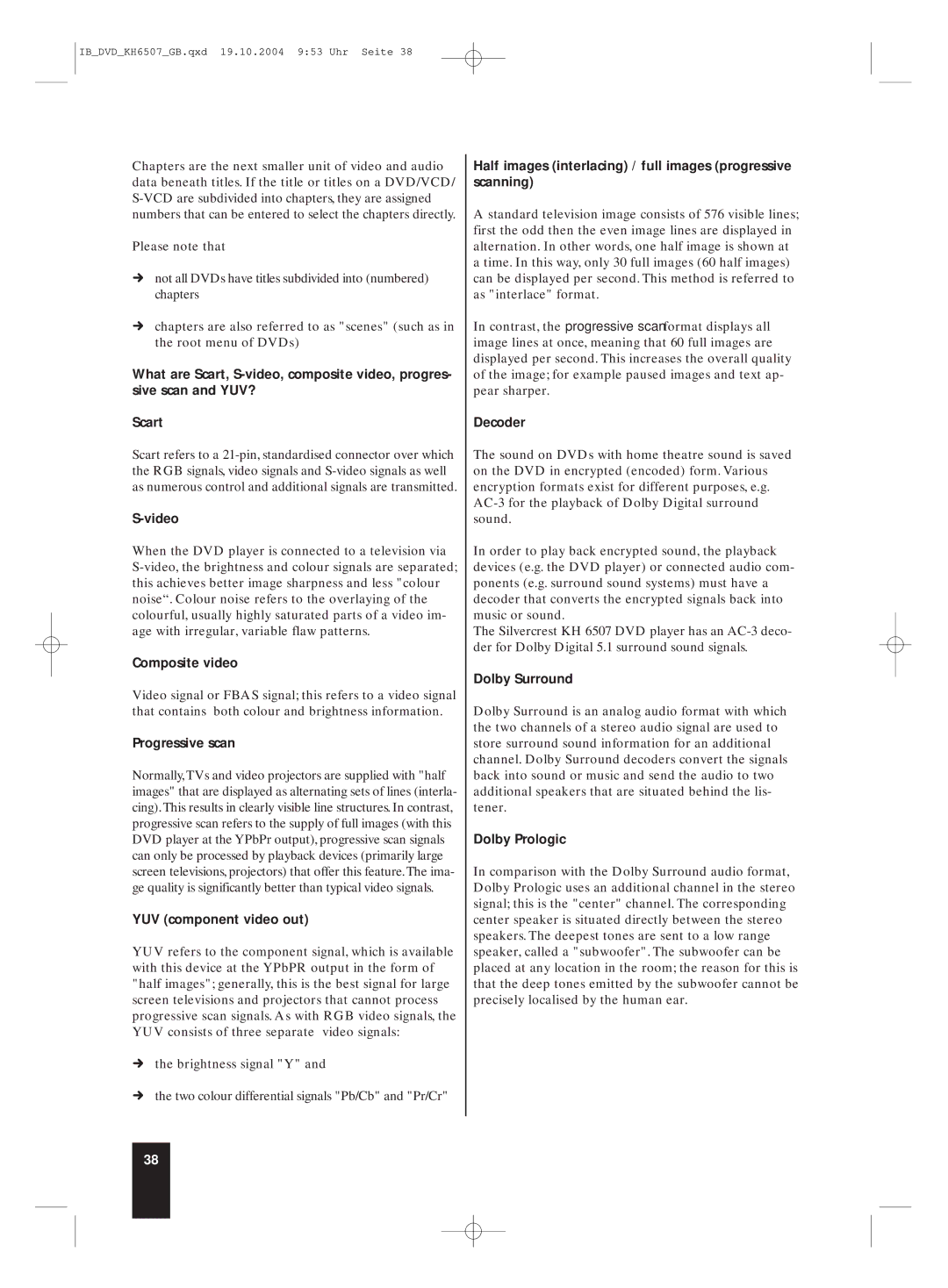
IB_DVD_KH6507_GB.qxd 19.10.2004 9:53 Uhr Seite 38
Chapters are the next smaller unit of video and audio data beneath titles. If the title or titles on a DVD/VCD/
Please note that
Únot all DVDs have titles subdivided into (numbered) chapters
Úchapters are also referred to as "scenes" (such as in the root menu of DVDs)
What are Scart,
Scart
Scart refers to a
S-video
When the DVD player is connected to a television via
Composite video
Video signal or FBAS signal; this refers to a video signal that contains both colour and brightness information.
Progressive scan
Normally,TVs and video projectors are supplied with "half images" that are displayed as alternating sets of lines (interla- cing).This results in clearly visible line structures. In contrast, progressive scan refers to the supply of full images (with this DVD player at the YPbPr output), progressive scan signals can only be processed by playback devices (primarily large screen televisions, projectors) that offer this feature.The ima- ge quality is significantly better than typical video signals.
YUV (component video out)
YUV refers to the component signal, which is available with this device at the YPbPR output in the form of "half images"; generally, this is the best signal for large screen televisions and projectors that cannot process progressive scan signals. As with RGB video signals, the YUV consists of three separate video signals:
Úthe brightness signal "Y" and
Úthe two colour differential signals "Pb/Cb" and "Pr/Cr"
Half images (interlacing) / full images (progressive scanning)
A standard television image consists of 576 visible lines; first the odd then the even image lines are displayed in alternation. In other words, one half image is shown at a time. In this way, only 30 full images (60 half images) can be displayed per second. This method is referred to as "interlace" format.
In contrast, the progressive scan format displays all image lines at once, meaning that 60 full images are displayed per second. This increases the overall quality of the image; for example paused images and text ap- pear sharper.
Decoder
The sound on DVDs with home theatre sound is saved on the DVD in encrypted (encoded) form. Various encryption formats exist for different purposes, e.g.
In order to play back encrypted sound, the playback devices (e.g. the DVD player) or connected audio com- ponents (e.g. surround sound systems) must have a decoder that converts the encrypted signals back into music or sound.
The Silvercrest KH 6507 DVD player has an
Dolby Surround
Dolby Surround is an analog audio format with which the two channels of a stereo audio signal are used to store surround sound information for an additional channel. Dolby Surround decoders convert the signals back into sound or music and send the audio to two additional speakers that are situated behind the lis- tener.
Dolby Prologic
In comparison with the Dolby Surround audio format, Dolby Prologic uses an additional channel in the stereo signal; this is the "center" channel. The corresponding center speaker is situated directly between the stereo speakers. The deepest tones are sent to a low range speaker, called a "subwoofer". The subwoofer can be placed at any location in the room; the reason for this is that the deep tones emitted by the subwoofer cannot be precisely localised by the human ear.
38
